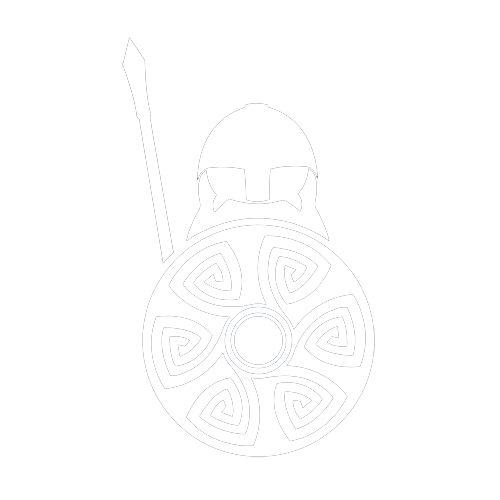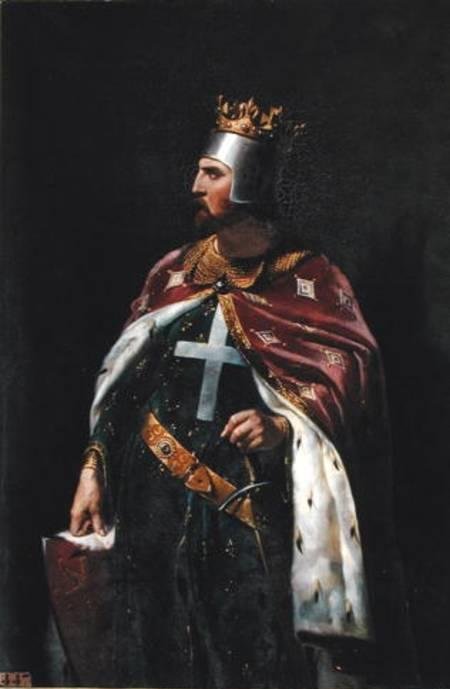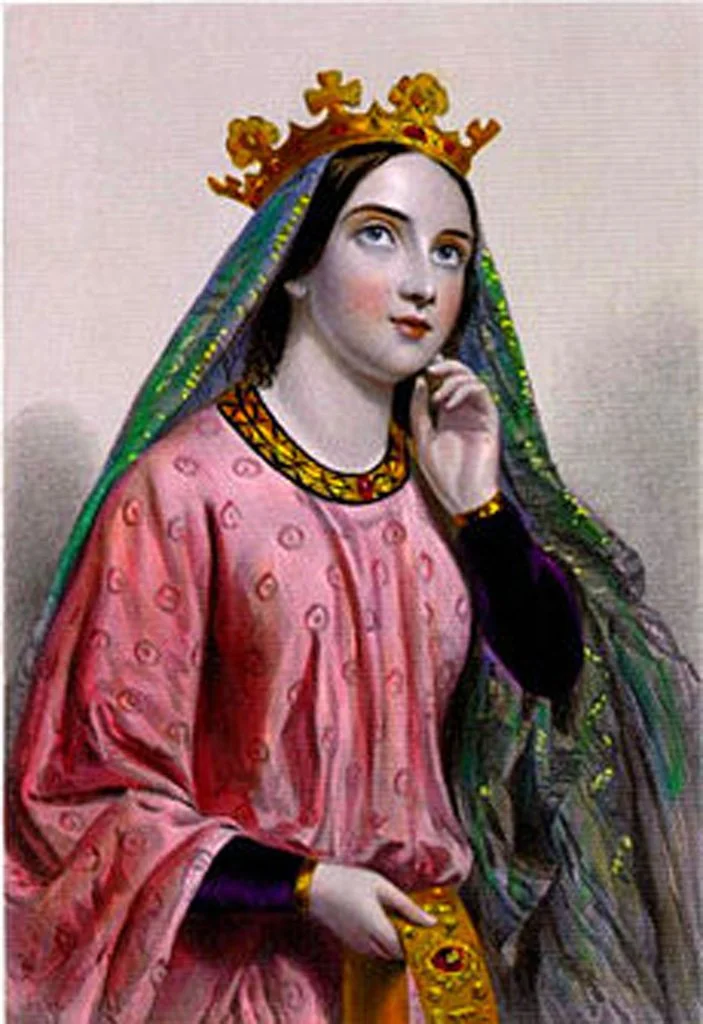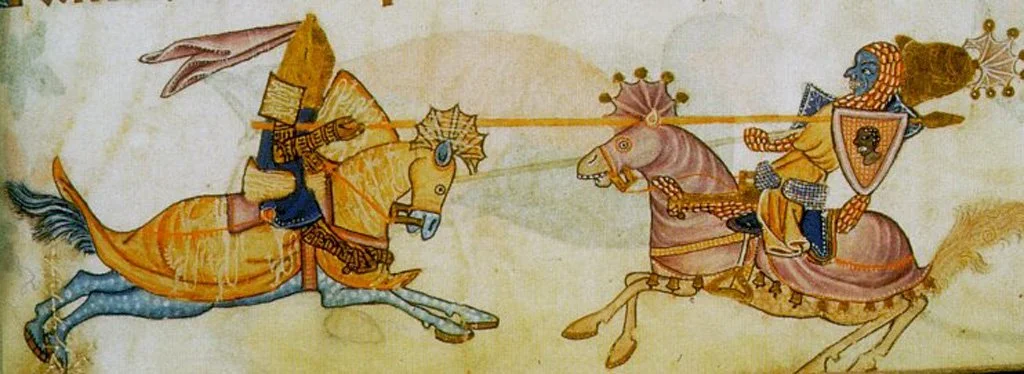King Richard I the Lionheart King
King Richard I was the third son of Henry II and Eleanor of Aquitaine, and the most successful. Favoured by his mother, King Richard I became an outstanding warrior and something of a national hero. A far cry from his tyrannical younger brother, John. Richard became known as the Lionheart, or Coeur de Lion for his bravery and courage in battle. Particularly so with his victories against Saladin and the Saracens, during the Third Crusade.
Life Events of King Richard I
1157
On 8 September, Richard I is born in Oxford, England. He is the third son of King Henry II of England and Eleanor of Aquitaine.
1189
On 3 September, Richard I is crowned King of England at Westminster Abbey, following the death of his father, King Henry II.
1190
King Richard I embarks on the Third Crusade, a military expedition to the Holy Land. He joins forces with King Philip II of France and Holy Roman Emperor Frederick Barbarossa.
1191
Richard I captures the city of Cyprus en route to the Holy Land and establishes his authority over the island.
1191
King Richard I achieves a significant victory at the Battle of Arsuf, defeating the Muslim forces led by Saladin.
1192
On 2 September, Richard I negotiates a truce with Saladin, known as the Treaty of Jaffa, which grants Christian pilgrims access to Jerusalem.
1192
On 20 December, Richard I is captured near Vienna, Austria, by Leopold V, Duke of Austria. He is handed over to Emperor Henry VI, who demands a ransom for his release.
1194
On 4 February, King Richard I is released from captivity after a substantial ransom is paid. He returns to England and resumes his reign.
1199
Richard I besieges the castle of Châlus-Chabrol in France. During the siege, he is struck by a crossbow bolt and suffers a fatal wound.
1199
On 6 April, King Richard I dies at the age of 41 from the infection caused by his wound. He is succeeded by his younger brother, John.
Interesting Facts About King Richard I
Nickname
Richard I earned the nickname ‘Lionheart’ due to his reputation as a courageous and skilled military leader on the battlefield.Language
Richard was fluent in multiple languages. He spoke both French and Occitan, which were widely spoken in his domains, as well as Latin. He had limited command of English, as he spent little time in England during his reign.Musician
Richard was not only a warrior but also a skilled musician. He was known to play several musical instruments, including the harp, flute and drums. He even composed songs and poetry.Chivalric Code
Richard I was a devoted adherent of the chivalric code. He championed knightly virtues, such as courage, honour and prowess inspiring the romanticised image of a medieval knight.Ransom Price
Richard I was famously captured in 1192 on his way back from the Holy Land and held for ransom. The ransom demanded for his release was an exorbitant sum of 150,000 pounds of silver, which put a significant strain on the English treasury (three times the annual income of England).Castle Builder
Richard was a prolific castle builder. He constructed several fortified structures in his domains, including Château Gaillard in Normandy, France, which was considered an architectural masterpiece of its time.Castle-Building Campaign
Stephen embarked on an extensive castle-building campaign during his reign. It is estimated that he constructed over 100 new castles across England, many of which were intended to strengthen his control and serve as strategic strongholds.Philip II of France
Richard had a tumultuous relationship with his rival, King Philip II of France. They were at odds with each other politically and engaged in multiple military confrontations throughout their reigns.Legendary Archer
Richard I was reputed to be an excellent archer and had exceptional skill with the longbow. His archery prowess was often compared to that of his contemporary, William Tell.
Battles Fought By King Richard I
Siege of Acre
On 28 August 1189, the Siege of Acre was a significant military campaign during the Third Crusade. Richard I played a prominent role in the end of siege in 1191, leading the Christian forces in an extended siege against the city of Acre, which was held by the Muslim forces led by Saladin. The siege ended with a victory for the Crusaders.Battle of Arsuf
On 7 September 1191, this battle took place during the Third Crusade. Richard I and his forces engaged the Muslim forces led by Saladin near Arsuf, a coastal town in present-day Israel. The battle resulted in a decisive victory for Richard I, allowing the Crusaders to advance further into the Holy Land.Battle of Jaffa
On 8 August 1192, following the capture of Acre, Richard I led his forces in a campaign to secure the city of Jaffa. The battle saw the Crusaders defend the city against a Muslim counterattack. Richard I personally led a charge against the enemy forces, leading to their defeat and the successful defense of Jaffa.
FAQs About the King
Who was King Richard I of England?
King Richard I, commonly known as Richard the Lionheart, was a medieval English monarch who reigned as the King of England from 1189 to 1199. He was a renowned military leader and participated in the Third Crusade.How did Richard I earn the nickname ‘Lionheart’?
Richard I earned the nickname ‘Lionheart’ due to his reputation as a courageous and skilled warrior on the battlefield. He displayed exceptional bravery and leadership, especially during his involvement in military campaigns and the Crusades.What role did Richard I play in the Crusades?
Richard I played a significant role in the Third Crusade (1189-1192), which aimed to recapture the Holy Land from Muslim forces. He led the Crusader army alongside other notable European leaders, including King Philip II of France and Holy Roman Emperor Frederick Barbarossa.Was Richard I successful in the Crusades?
While Richard I achieved notable victories and displayed remarkable military prowess during the Crusades, including the capture of key cities like Acre and Jaffa, he ultimately failed to retake Jerusalem. However, his military achievements and reputation as a valiant Crusader left a lasting impact.Why did Richard I spend so little time in England during his reign?
Richard I had a limited presence in England during his reign due to his primary focus on military campaigns, particularly the Crusades. He believed that his territories in France and his participation in the Holy Land were more critical to his realm than England itself.How was Richard I captured and held for ransom?
During his return from the Holy Land in 1192, Richard I was captured near Vienna, Austria, by Leopold V, Duke of Austria. He was handed over to the Holy Roman Emperor, Henry VI, who demanded a substantial ransom for his release. The ransom was eventually paid, securing Richard's freedom.How did Richard I die?
Richard I died on 6 April 1199, from a wound inflicted by a crossbow bolt during a siege at Châlus-Chabrol Castle in France. The wound became infected, leading to his untimely death at the age of 41.What is Richard I's historical legacy?
Richard I is remembered as one of England's most legendary and romanticised kings. His military prowess, participation in the Crusades and reputation as a chivalrous knight have left an enduring mark in history and folklore. He is often regarded as a symbol of medieval kingship and valour.
Further Reading
King Richard I and his Accession to the Throne
King Richard I started out life in England, being born in Oxford on 8th September 1157. Richard spoke French and Occitan, rather than English, and this supports the fact that he spent most of his time abroad.
After his father's affair with mistress Rosamund Clifford, Richard and his mother left for France. There, in 1168, they established court in Eleanor's duchy of Aquitaine, and then Poitiers in 1172. Eleanor named Richard as heir of her realm.
It is here that Eleanor plotted with her sons to campaign against their father, Henry II, in Normandy. The bitter feud continued, until Richard's older brother and heir to the English throne died in 1183.
By 1189, Richard, now allied with the Philip King of France, had still not been named heir by his father. Henry II had clung onto power for too long, leaving a frustrated Richard with little choice but to launch a final attack. Allied with Philip, Richard surprised his father with the speed of the assault. Weary from ill health and constant feuding, Henry surrendered to his son.
King Richard I acceded the throne of England in July 1189, after the death of his father. He was crowned on 3rd September that year, in Westminster Abbey.
The coronation, however, became soured with the flogging of Jewish well-wishing leaders, who were then thrown out of court. This news had spread, and the local Londoners began attacking Jews and their homes. The anti-Semitic uprising had to be quashed by the king quickly. He rounded up those responsible for the worst crimes and had them executed, and then dispatched a royal writ demanding Jews be left alone.
King Richard I and the Third Crusade
King Richard I did not stay long in England after his coronation. The Pope Gregory VIII called for another Crusade to retake Jerusalem from Saladin. Richard had already agreed to join before becoming king.
King Richard I only remained in England long enough to accumulate money for his expedition to the Holy land. William the Lion of Scotland, who at the time was a feudal subject of England, gave Richard 10,000 marks in return for his kingdom’s independence by the Quitclaim of Canterbury. Some of this money, however, went to bribe Richard's younger brother John, to keep him out of the country while Richard was away.
King Richard I in Sicily
In 1190, King Richard I and his long-time ally, Philip of France, departed for the Third Crusade. By September, King Richard I arrived in Sicily where his sister, Joan of England was Queen. However, her nephew Tancred had wrongly seized power after the death of his cousin, King William II of Sicily, and had Queen Joan (of England, William's widow) imprisoned.
Richard demanded Joan's release, and Tancred obliged only after Richard sacked Messina in October 1190.
King Richard I in Cyprus
In 1191, it was time to move onto Acre, north of Jerusalem. However, a storm had thwarted the route, and some of the ships landed on the south coast of Cyprus, among the passengers, were Joan and Berengaria.
Some surviving passengers were taken prisoner by the Cypriot ruler, Isaac Komnenos. When King Richard I arrived, he demanded their release, but was flatly ignored by Isaac. Richard disembarked his soldiers and seized Limassol with the help of some princes from the Holy Land, in particular Guy of Lusignan. Isaac tried to escape, but the whole island was captured and the prisoners released. Isaac ended up prisoner himself.
The capture of Cyprus did wonders for Richard's reputation. Support for him grew quickly, and he gained many allies for his Crusade to Jerusalem.
King Richard I Marries Berengaria of Navarre
During their stay in Sicily, King Richard I and Philip had quarrelled about Philip's sister, Alys. She had been betrothed to Richard for 20 years, but he did not want to marry her, fearing she had been his father's mistress.
Eleanor, Richard's mother, on the other hand had been trying to match Berengaria of Navarre with Richard for a while. As luck would have it, Berengaria happened to be in Sicily at that time (actually, not so much luck, but clever planning by Eleanor).
The match would bring together Eleanor's duchy of Aquitaine and the Kingdom of Navarre. Richard informed England that he planned to marry Berengaria, much to the displeasure of Philip. On 12 May 1191, before leaving for Acre, Richard married Berengaria in Limassol, Cyprus.
Berengaria travelled with Richard on Crusade, but they returned separately. She had problems returning, and didn't arrive in England until after Richard's death.
King Richard I in Acre
King Richard I arrived in Acre in June 1191, along with Philip of France, Guy de Lusignan and Duke Leopald V of Austria. The kingship of Jerusalem had two claimants in Guy de Lusignan and Conrad de Montferrat.
Guy de Lusignan was the widower of his father's cousin Sibylla of Jerusalem (daughter of Amalric I of Jerusalem), and he had Richard's support. However, Conrad de Montferrat, was the second husband of Sibylla's half-sister, Isabella, and had the support of Philip and Leopald. These differences in support would begin to cause dissent amongst the allies.
Richard and the Crusaders attacked and captured Acre, despite suffering from scurvy. Acre fell on 8 June 1191, and Conrad de Montferrat began negotiations for Saladin's surrender. The banners of victory were raised in the city. However, signs of trouble within the Crusader ranks were showing.
Leopald became angered by the treatment of Isaac in Cyprus, who was related to Leopald's mother. When Leopald raised his banner alongside the standards of England and France, Richard and Philip saw this as disrespectful and arrogant. After all, Leopald was only a vassal of the Holy Roman Emperor, and did not have the nobility of England or France. So Richard's men tore down the banner, and with that Leopald deserted the Crusade.
Philip of France would soon follow. Disputes with Richard over Cypriot territories and who should rule Jerusalem, proved too much. Philip left the Crusade with immediate effect, leaving King Richard I with fewer troops than he required for a successful Crusade.
Richard now had control over nearly 3000 prisoners, and he knew he could not travel south to Jerusalem with them all in tow. So Richard gave the order for them all to be executed. This murderous act would be the main blot on Richard's reign.
Richard moved south with 20,000 men. During their travels, waves of lightly armoured Turks on horseback provoked the heavily armoured knights, with volleys of arrows. No match for the heavy armour, the knights retaliated, charging back at the Turks. However, the heat exhausted the knights and horses, and they chose not to pursue the light-footed Turks any longer.
On 7th September 1191, the Crusaders met Saladin's army at the Battle of Arsuf. Saladin had underestimated the Christian army in a face-to-face battle. King Richard I and his army maintained their defensive positions, and with a counter-attack, charged over Saladin's lightly armoured formations. The strategy would eventually, after much blood-shed, win the battle for Richard. This was an important, morale-boosting victory for the Crusaders. But ultimately, it did not wipe out Saladin and his army completely.
King Richard I and Jerusalem
After the victory in Arsuf, King Richard I and his army marched on Jaffa (today's Tel Aviv). There they took the town and garrisoned it ready for the assault on Jerusalem. However, sickness and fatigue was spread throughout the troops, and a retreat to the coast was unavoidable. Richard could see his army weakening, and attempted to negotiate a marriage with Saladin's nephew to his sister Joan. Saladin agreed, but Joan refused outright.
Elections amongst the nobles followed, and Conrad de Montferrat was elected King of Jerusalem in April 1192, much to Richard's unease. However, before Conrad was crowned, two assassins murdered him. Conrad's widow, Isabella of Jerusalem, was heir to the throne by right, and she quickly married Henry II of Champagne, nephew of Richard and Philip.
By this point, Richard knew he could not take Jerusalem - he wanted to invade Saladin's supply base in Egypt, but the French wanted to attack Jerusalem directly. The Crusader army was split into two. Both forces were too small to achieve their objectives, and too small to hold the city after capture. The only option was another retreat back to the coast.
Back in England, Richard I's brother John, with Philip of France, were making moves to take the English throne from him. William Longchamp, bishop of Ely, was tasked with running England while the king was away. But he had alienated the barons, and John saw his opportunity to seize the throne.
Despite the low morale of Saladin's army, the threat of John at home was too much of a risk for Richard. He negotiated a settlement with Saladin on 2nd September 1192, and ended the Crusade. The settlement allowed the destruction of the fort of Ascalon, in exchange for allowing Christians to visit Jerusalem on pilgrimages and trade.
King Richard I and his Ransom
King Richard I departed the Holy land in October 1192. But his bad luck was not over, as his ship became caught up in bad weather and wrecked upon the coast of Aquileia. Richard had little choice but to continue on foot through Europe.
In December 1192, Richard was captured and taken prisoner by Leopald V, Duke of Austria. Richard had insulted Leopald in the Holy Land, when he threw down Leopald's banners in Acre. Leopald also accused Richard of the murder of his cousin, Conrad de Montferrat. While imprisoned in Durnstein Castle, the news spread to the Pope. It was illegal to imprison a Crusader, and so the pope excommunicated Leopald.
On 28th March 1193, Richard was handed over to Henry VI, Holy Roman Emperor, and imprisoned in Trifels Castle. Henry needed money to raise an army to assert his rights over Southern Italy, and so held Richard for ransom. The Pope learned of Richard's new capture, and excommunicated Henry too.
The ransom for King Richard I was 150,000 marks, three times the annual income of England! Richard's mother, Eleanor of Aquitaine, worked to raise the ransom through church taxes, based on the value of their properties. Meanwhile, Richard's plotting brother John, with Philip of France, offered Henry 80,000 marks to extend Richard's imprisonment. This offer was declined by Henry.
On 4th February 1194, King Richard I was released with the ransom paid in full. Philip of France sent John the message:
“Look to yourself, the devil is loose”
After a few months back in England, Richard forgave his brother and named him heir. Richard then returned to France to recapture his lost lands in Normandy, which were taken by Philip of France. He was successful, however a deep wound to the shoulder from a crossbow bolt became infected, and King Richard I died on 6th April 1199 at Chalus, France.
King Richard I Coat of Arms
King Richard I was the first king to feature three lions on his shield, in the second great seal of England in 1198. This could well be the origin of the Royal Arms of England. Richard's first great seal of England only featured two lions, which were likely to have been passed down by his father, Henry II.







